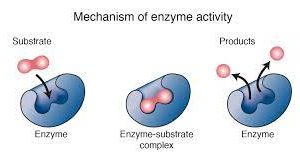The typical distemper suspect is a rescue or pet store dog or puppy, usually with questionable vaccination history or an as yet incomplete vaccination series. The dog or puppy has been housed with other rescue dogs. Symptoms begin with:
- Gooey eye and nose discharge
- Fever (which often comes and goes unnoticed)
- Poor appetite
- Coughing and the development of pneumonia
The virus is attacking interfaces of the body with the environment (the mucous membranes) and starts with the respiratory tract, hence the pneumonia, but it does not stop there. The virus moves on to produce:
- Vomiting and diarrhea
- Callusing of the nose and foot pads (hence one of the old names for distemper — hard pad disease)
After completing what is called the “mucosal phase” of infection where environmental interfaces are attacked (as described by the above GI and respiratory disease), the virus proceeds to the central nervous system for its “neurologic phase” leading to:
Seizures (classically starting with snapping or tremoring of the jaws that progress to convulsions of the whole body. This distemper classic sign is called a chewing gum fit.)
- Seizures are not the only distemper sign by any means. Tremors , imbalance, and limb weakness all may occur. Signs may progress to death or may become non-progressive and permanent. Recovery is also possible.
This means that the dog appears to recover only to break with neurologic disease 1 to 3 weeks later. Younger puppies or individuals with weak immunity often die during the mucosal phase while stronger individuals may have relatively mild mucosal signs and not appear ill until the neurologic phase strikes.
THE VIRUS ITSELF
 The canine distemper virus is closely related to the human measles virus and, in fact, in older times, puppies were immunized for distemper with vaccine against measles. It has been said that a child in the home of a dog vaccinated with live distemper virus vaccine will become exposed to the virus and immunized against the measles (though we do not recommend such experiments at home).
The canine distemper virus is closely related to the human measles virus and, in fact, in older times, puppies were immunized for distemper with vaccine against measles. It has been said that a child in the home of a dog vaccinated with live distemper virus vaccine will become exposed to the virus and immunized against the measles (though we do not recommend such experiments at home).
The distemper virus consists of a single strand of RNA, encased in a protein coat which is again encased in a fatty envelope. This sounds esoteric but the fatty envelope makes all the difference in the world. The fatty envelope is easily disrupted in th e environment which makes it impossible for infectious virus to persist in the environment. Because an intact fatty envelope is required for infection, virus transmission must involve dog to dog contact or at least contact with extremely fresh (less than 30 minutes old at 60 degrees and up to 3 hours oldat room temperature) infected body secretions. As with other viruses, living virus happily freezes and can survive for years if kept frozen and protected from light. Routine disinfection and cleaning readily kills the distemper virus in the kennel setting.
TRANSMISSION AND INFECTION
The infected dog typically infects other dogs via coughing infected respiratory secretions though the virus is shed in most other body secretions including urine. The virus enters the new host via the nose or mouth and promptly begins to replicate. Virus is engulfed by cells of the immune system called “macrophages.” The idea is that the virus will be engulfed, walled off within the cell and then destroyed by enzymes. Unfortunately for the new host, this process does not damage the virus as intended; instead, the virus is able to use the macrophage as a means of transportation through the host’s body. Within 24 hours, the virus has traveled to th e lymph nodes of the lung. By the 6th day, the virus has migrated to the spleen, stomach, small intestine, and liver. Fever is developing at this point.
By day 8 or 9 an important crux is reached in the timetable of infection. The host is mounting an immune response during this time and the outcome depends on how fast and how well this is accomplished. A strong immune response begins to clear the virus at this point and has eliminated all traces of virus with no symptoms of illness by Day 14. A weak immune response allows the virus to reach the “epithelial cells,” the cells which line every interface the body has with the outside world. The tender epithelial cells lining the chambers of the brain are infected as well. The host begins to get sick as the virus spreads but as the host’s immune response grows symptoms wane. This phenomenon accounts for the wide variability in symptoms; some dogs get only a few mild symptoms while others get a full lethal combination.
After clearing from most internal organs, the virus is able to “hideout” for long periods of time in the nervous system and skin. Because of this phenomenon, callusing of skin or, much worse, seizures may occur long after the infection was thought to be cleared.
Most victims in the U.S. are puppies. (The colostrum suckled in the first day or so of life will provide them with a solid reflection of their mother’s immunity. This will have waned by age 16 weeks leaving the puppy vulnerable if vaccines have not been administered for further protection. In our society most mother dogs will have received some form of vaccination and thus be able to pass on at least some immunity and will have some ability to protect herself. In societies where vaccination is not common, distemper attacks all age dogs.)
CONFIRMING THE DISTEMPER INFECTION
As if it is not bad enough that this infection has a poorly defined endpoint so one never knows for sure one is “out of the woods,” it is almost impossible to confirm a distemper diagnosis. Because of this, distemper is a “clinical diagnosis” which means that rather than confirming infection with a test that is negative or positive, the veterinarian must look at the whole picture: what symptoms are there, is the history typical, etc. The virus itself remains elusive so that positive test results are meaningful in confirming the infection, but negative results=2 0do not rule it out. The following are tests that can be used:
DISTEMPER INCLUSION BODIES — “Distemper inclusion bodies” are actual clumps of virus that are visible under the microscrope within infected cells. Post-mortem inclusion bodies are readily visible in the urinary bladder tissue thus making confirmation of distemper after death relatively easy. In the living patient, we typically have ready access to blood cells and cells of the eye’s conjunctival membranes (the pink park of the eye socket). To enhance the visibilty of inclusion bodies, “immunocytology” is used. In this technique, antibodies against distemper virus are tagged with fluorescent markers. The antibodies bind to virus if it is present effectively dying the inclusion body with glow-in-the-dark fluorescent color. The presence of inclusion bodies confirms distemper infection. The lack of dectectable inclusion bodies does not rule out distemper infection as inclusion bodies ultimately become coated with the host’s own antibodies which in turn block the fluorescent-tagged antibodies used in the test.
 |
If callusing of the footpads or nose is evident, a biopsy of this tissue can be tested for inclusion bodies fairly late in infection.
DISTEMPER ANTIBODY LEVELS — Distemper titers (another word of “antibody level”) of either the “IgM” type (produced in early stages of infection) and the “IgG” type (produced in later phases of infection) can be checked. The problem is that distemper vaccination induces these same antibodies and often distemper suspects have had recent vaccination. A high IgM titer indicates recent infection or recent vaccination. There is no way to tell which.
PCR TESTING – PCR testing involves amplification of DNA so as to allow detection of very small amounts of virus. Since the distemper virus is an RNA virus, not a DNA virus, a test called “Reverse Transcriptase PCR” must be used but the amplification concept is the same. Vaccination will interfere with PCR testing for approximately 2 weeks (i.e. the modified virus from the vaccine will be detected creating a false positive).
CEREBROSPINAL FLUID ANTIBODY LEVELS — In neurologic distemper cases, cerebrospinal fluid is often tapped and distemper antibody levels checked. Dist emper antibodies in cerebrospinal fluid is highly indicative of distemper infection as vaccine-induced antibodies do not cross the blood-brain barrier into the CSF fluid.
TREATMENT FOR DISTEMPER
Many bizarre protocols have emerged over time as we grope for meaningful anti-viral therapy. The fact remains that recovery from distemper is all about immunity and the only real treatment is supportive care while the patient mounts its own immune response. If the patient has pneumonia, antibiotics are used on the secondary bacterial infections. Airway dilators are used as needed. Physical therapy is used to promote cough. If the patient has diarrhea, intravenous fluids are used to prevent dehydration etc.
Distemper is extremely variable in its ability to produce symptoms and recovery occurs at any stage. This has led to assorted therapies being credited with effect when what was more likely witnessed was the natural removal of the infection by the host’s immune system.
Neurologic distemper is particularly difficult to treat. Still, it is possible for dogs to recover with livable deficits even from neurodistemper; euthanasia is best left for progressive, incapacitating neurologic symptoms.
PREVENTION OF INFECTION
If confirming diagnosis and therapy are the pitfalls of distemper, prevention is the easy part. Effective distemper vaccination has been available since the 1950s. Prior to widespread vaccination, distemper was the scourge of the canine community, wiping out entire townfuls of pet dogs. Today, distemper is a rare disease except in the shelter, rescue, and pet store world.
The “distemper shot” is the basic immunization for dogs. It is generally combined with vaccine for canine parvovirus as well for parainfluenza, adenovirus 2, leptospirosis, and sometimes coronavirus. Puppies are vaccinated beginning at age 6-8 weeks and then every 2 to 4 weeks thereafter until age 16 weeks. The next vaccine is one year later. After that subsequent vaccination boosters are given every 1 to 3 years or based on antibody levels depending on the policy of the supervising animal hospital.
Vaccine is available in the traditional modified live virus format, where distemper virus is modified to induce immune-response but not illness. Vaccine is also available in the recombinant format w here a live harmless virus (not the distemper virus at all modified or otherwise) is used to carry the portion of the distemper virus which generates the immune-response. The benefit of the recombinant format is that it is completely impossible for distemper or distemper encephalitis to occur as the result of vaccination. These complications are exceedingly rare but still possible with modified live virus vaccine.
The use of the human measles virus to vaccinate against canine distemper is largely passe nowadays. Immunity obtained this way does not last as long and is not as successful as that obtained with a modified live or recombinant distemper vaccine.
THE NEUROLOGIC PHASE
Classically, the neurologic phase of distemper occurs 1-3 weeks after the resolution of the mucosal phase but can potentially occur months afterwards. Sometimes the mucosal phase is so minor that is is not noticed, as might occur in a dog that is older or has received some vaccines but not enough for full protection. For these dogs the neurologic phase seems to come out of no where. Often a dog can survive even a severe mucosal phase but the development of a neurologic phase is a more serious blow to the dog’s recoverability.
A wide variety of neurologic signs are possible: twitching, seizures, neck pain, vestibular signs, neck pain and muscle rigidity have all been described. A classic type of seizure is called the “chewing gum fit” as described above and often the appearance of this type of seizure clenches the diagnosis of distemper if there was any question before. Neurologic signs tend to be progressive, getting more severe and more frequent, but if in some patients they seem to arrest and become permanent at a certain level. For some dogs this might mean a muscle tic. For others, seizures or other symptoms that can be controlled or palliated with medications. If symptom progression stops, hopefully the symptoms the dog is left with will leave enough room for good life quality and euthanasia will not be necessary.
Whether or not the virus is able to penetrate the central nervous system seems to depend on the dog’s ability to make antibodies against the outer envelope of the virus. Dogs that mostly make antibodies against the core proteins of the virus are not able to keep the virus out of their nervous systems. However, what happens once the virus reaches the nervous system depends on the strain of the virus as well as the host’s immunological ability at the time of the infection. Not all dogs with nervous system infection experience nervous system symptoms. There is currently no way to predict which dogs will develop symptoms and which ones will not.
It seems that here we have a disease for which a lethal outcome is possible yet there is no test to confirm the infection and no way to determine if the infection is truly over with. The owner of a distemper suspect will have numerous questions and here we attempt to answer questions that may not have been overtly covered in the above text.
 I own a young dog with very badly stained and pitted teeth.
I own a young dog with very badly stained and pitted teeth.
I was told this might indicate she had distemper as a puppy. How would distemper have caused this?
The distemper virus attacks “epithelial cells.” These are cells that line the interfaces with the environment, the mouth included. In puppyhood the buds of t he permanent teeth are still developing (from epithelial cells). The distemper infection (and associated fevers) can leave these tooth buds permanently damaged so that the adult teeth come in with stained and pitted enamel. This is called “enamel hypoplasia.”
Is there any way to predict whether a dog with distemper will progress to the neurologic phase?
Not really. The phase of infection that precedes the virus entering the central nervous system is the phase where the skin is attacked. Callusing of the nose and foot pads tends to be associated with the development of neurologic distemper. As a general rule about 50% of dogs that recover from the mucosal phase will progress to neurodistemper. Of the dogs that develop neurodistemper, it has been said that about 50% will do so within a month or two of the mucosal phase. Our impression is that 50% is probably a bit of an over-estimation. The risk of progressing to neurodistemper is less in adult dogs as they tend to mount more effective immune responses than puppies do.
We owned a dog that died and was suspected of having distemper. How should we disinfect our home before a new dog is introduced?
One of the few positive aspects of distemper is that the virus cannot live without fresh secretions; it is inactivated in minutes outside the living host’s body. Minimal disinfection is necessary.
How long is a recovered dog contagious?
A recovered dog may shed virus up to 2 to 3 months. It is important to keep this in mind when taking a recovered pet anywhere where other dogs are present. The most intense viral shedding occurs in the first 2 weeks of infection.
What is “Old Dog Encephalitis?”
The condition called “Old Dog Encephalitis” refers to a chronic brain inflammation that can occur in a dog that had distemper many years prior. These brain lesions are identical to those in dogs that progress to a chronic neurologic distemper as part of the brunt of their infection. For some reason, in some individuals, the dog lives nearly all its life as a distemper survivor only to break with neurodistemper in old age.
What is “Vaccinial Distemper?” Can a dog actually get distemper from its vaccine?
“Vaccinial Distemper” refers to the development of neurodistemper 10 to 21 days after administration of a modified live distemper vaccine (it is not possible to have this reaction when a recombinant vaccine is used).
Can humans get infected with the canine distemper virus?
Humans can get infected with the virus meaning the virus seems able to replicate in the human body but no illness results. At one time, multiple sclerosis was thought to be associated with exposure to the canine distemper virus but further research suggests that it is actually the human measles virus (a close relative of canine distemper) that may be the culprit. It does not appear that there is any human hazard in the canine distemper virus.
Should a recovered dog continue to receive distemper vaccinations?
Technically, if a dog has recovered from the distemper virus the resulting immunity should be lifelong and vaccination is unnecessary. That said, the “distemper vaccine” is actually a combination vaccine covering up to 7 infections, including canine parvovirus. One may not want to skip these other important vaccinations. Further, as discussed, confirmation of distemper infection can be problematic. This begs the question as to whether there is any harm to vaccinating with a product that includes a possibly unnecessary distemper vaccine. In fact, if a dog has recovered from distemper, there will be a rapid antibody response against the distemper vaccine live virus and it will be inactivated just as a natural infection would be. So the answer to this question is that while a recovered dog does not need distemper vaccination, there is no harm in continuing to give the vaccine and reaping the benefit of the additional infections typically covered in the product.
 Blog For Noob Random thought of a Noob Blogger
Blog For Noob Random thought of a Noob Blogger








